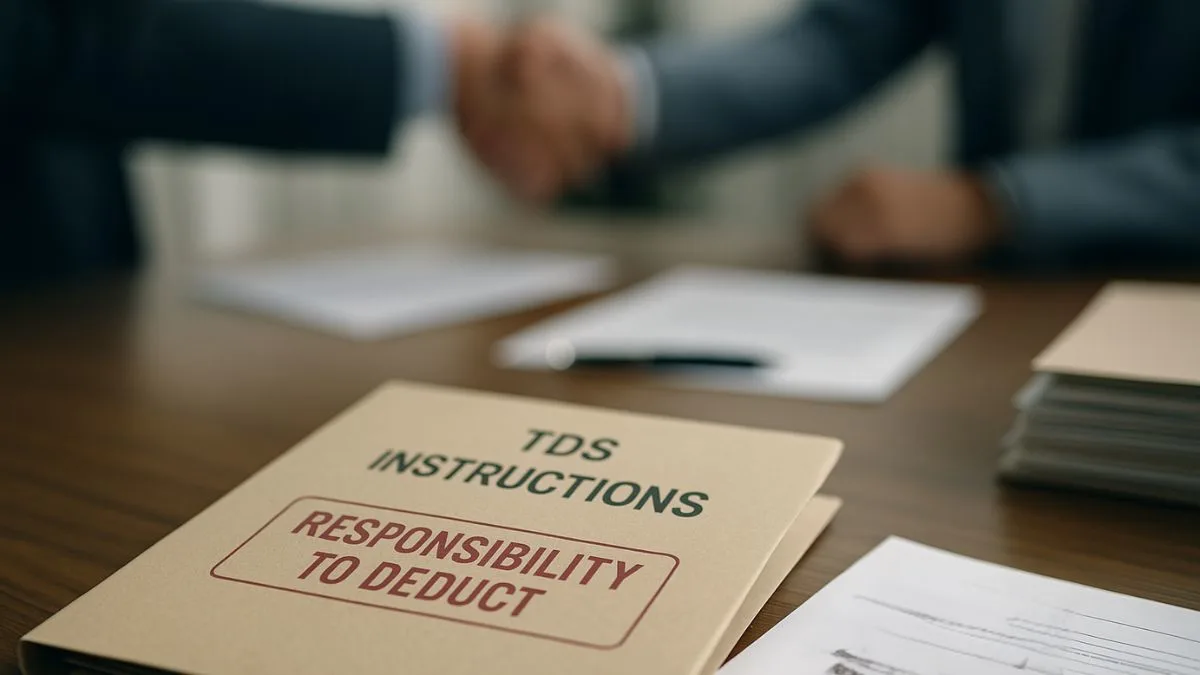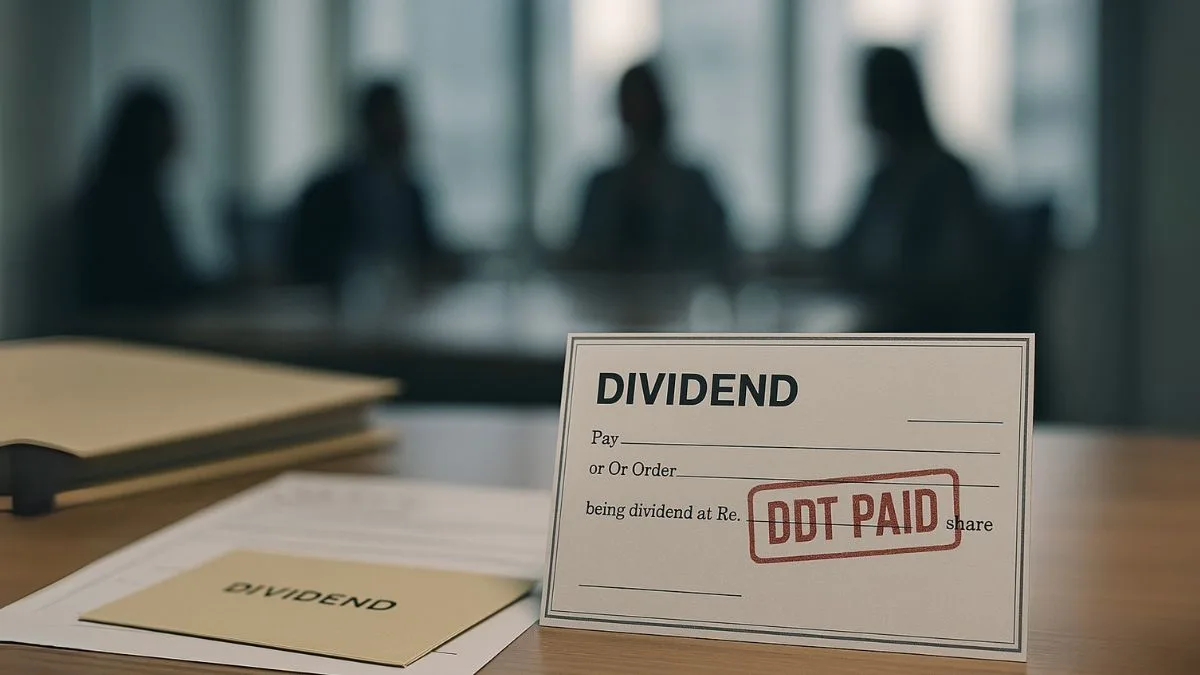
Intraday trading is one of the most popular ways to make quick gains in the stock market. It involves buying and selling shares on the same day to take advantage of small price movements. But when it comes to taxation, many traders find themselves confused — “Is intraday trading treated as capital gains or business income?”
The short answer: intraday trading profits are taxed as business income, not as capital gains. The Income Tax Act classifies such income under the head “Profits and Gains of Business or Profession.”
In this blog, we’ll decode which section applies, how profits and losses are treated, what deductions are allowed, and how to report intraday trading income in your ITR.
Which Section of the Income Tax Act Covers Intraday Trading?
There is no single section that defines intraday trading, but the taxation is governed under the head “Profits and Gains from Business or Profession” — primarily Section 28 of the Income Tax Act, 1961.
This section specifies that any income earned from the business or profession — including speculative business — is taxable as business income.
Further, Section 43(5) defines speculative transactions, which means transactions where a contract for purchase or sale of any commodity (including stocks and shares) is settled otherwise than by actual delivery.
Hence, intraday trading is treated as a speculative business because there is no delivery of shares. The profits gained from intraday trading are added to taxable business income and taxed accordingly.
Key Tax Sections Relevant to Intraday Trading
|
Section |
Purpose |
Applicability |
|
Section 28 |
Tax on “Profits and Gains from Business or Profession” |
Intraday trading income taxed as business income |
|
Section 43(5) |
Defines speculative transactions |
Intraday trades classified as speculative |
|
Section 44AB |
Audit requirements |
Tax audit mandatory if turnover > ₹10 crore (for traders without digital compliance) |
|
Section 139(1) |
Return filing |
ITR-3 for individuals with business income |
Classification of Intraday Trading Income
To understand how taxes apply, it’s important to know how intraday trading is classified:
- Speculative Business Income
When trades are squared off on the same day (no delivery), they fall under speculative business income.
Example: Buying 100 shares of Infosys at ₹1,500 and selling at ₹1,510 on the same day → ₹1,000 profit = speculative business income. - Non-Speculative Business Income
Delivery-based trading, F&O (futures and options), and certain commodity trades are non-speculative.
However, intraday equity trading is always considered speculative under Section 43(5).
How Is Tax Calculated on Intraday Trading Income?
Income tax on intraday trading is computed at your slab rate, just like any other business income.
- If your total income (including salary, rent, business income, etc.) is below ₹2.5 lakh → No tax.
- Between ₹2.5 lakh to ₹5 lakh → 5%
- Between ₹5 lakh to ₹10 lakh → 10% to 20%
- Above ₹10 lakh → 30%
Example:
A trader earns ₹4,00,000 from intraday trading and ₹6,00,000 as salary.
→ Total taxable income = ₹10,00,000.
→ Tax computed as per applicable slab (after deductions).
Thus, intraday trading profits are added to taxable business income and taxed at normal rates.
Turnover Calculation for Intraday Trading
Turnover for intraday trading is not the total buy-sell value — it is the absolute profit or loss (sum of positive and negative differences).
Example:
|
Transaction |
Buy Price |
Sell Price |
Profit/Loss |
|
Stock A |
₹1,00,000 |
₹1,10,000 |
₹10,000 |
|
Stock B |
₹2,00,000 |
₹1,80,000 |
-₹20,000 |
|
Stock C |
₹50,000 |
₹55,000 |
₹5,000 |
Turnover = |₹10,000| |₹20,000| |₹5,000| = ₹35,000
This turnover determines whether a tax audit is required.
Tax Audit Applicability
Under Section 44AB, a tax audit is mandatory in the following cases:
|
Condition |
Audit Required? |
|
Turnover > ₹10 crore (non-digital transactions) |
✅ Yes |
|
Turnover > ₹1 crore but < ₹10 crore and less than 95% of transactions are digital |
✅ Yes |
|
Turnover ≤ ₹2 crore and opted for presumptive taxation (Section 44AD) |
❌ Not applicable |
|
Loss or low profit declared and total income exceeds basic exemption limit |
✅ Yes |
If you’re an active trader using online brokers (where 99% of trades are digital), audit thresholds usually start from ₹10 crore.
Treatment of Losses from Intraday Trading
Losses from intraday trading are speculative business losses, and they cannot be set off against other non-speculative or salary income.
Here’s how you can adjust them:
|
Type of Loss |
Set-off Allowed Against |
Carry Forward Period |
|
Speculative Loss (Intraday) |
Only speculative business income |
4 years |
|
Non-Speculative Loss (F&O) |
Any business income |
8 years |
So, if you incur a ₹50,000 loss from intraday trading in FY 2024–25, you can carry it forward for four years and adjust it only against future speculative profits.
Deductions Allowed for Traders
Since intraday trading is treated as a business, you can claim expenses incurred wholly and exclusively for the purpose of earning income under Section 37(1).
Eligible deductions include:
- Brokerage charges and transaction fees
- Internet and trading software cost
- Depreciation on laptop or desktop
- Advisory or research subscriptions
- Office rent and electricity bills
- Salary to staff (if any)
These deductions help lower taxable income and optimize overall tax liability.
ITR Form for Intraday Trading Income
Traders earning intraday income must file ITR-3 since it covers business or professional income.
Steps:
- Report speculative turnover under “Business and Profession.”
- Add all trading-related expenses as deductions.
- Attach balance sheet and profit & loss account (if applicable).
- Pay self-assessment tax (if due) before filing.
If you are a salaried person doing part-time intraday trading, you still need to choose ITR-3.
GST Applicability
Goods and Services Tax (GST) is not applicable to stock market trading income. However, if you are earning from brokerage, advisory, or financial consultancy, GST provisions may apply separately.
Intraday vs Delivery Trading – Tax Difference
|
Aspect |
Intraday Trading |
Delivery Trading (Investment) |
|
Nature of Income |
Business income (speculative) |
Capital gains |
|
Section |
28 & 43(5) |
45 (Capital Gains) |
|
Tax Rate |
As per slab |
10% (LTCG) / 15% (STCG) |
|
Set-off Rules |
Speculative income only |
Can be set off against capital losses |
|
Audit Requirement |
Based on turnover |
Not applicable |
So, while investors pay tax under capital gains, intraday traders fall under business income rules.
Presumptive Taxation – Can You Opt for It?
No, presumptive taxation under Section 44AD is not available for speculative businesses like intraday trading.
You must maintain records of income and expenses or use broker-provided statements to prepare trading P&L.
Intraday Trading for NRIs
For Non-Resident Indians (NRIs), intraday trading through Indian brokers is restricted under FEMA regulations. However, if done through an NRO account, taxation will still follow the speculative business income rule, with TDS deducted by brokers before repatriation.
Common Mistakes Traders Make
- Treating intraday gains as capital gains.
- Not maintaining digital records or expense proofs.
- Missing ITR-3 filing deadline.
- Ignoring audit applicability even with low net profit.
- Claiming unrelated expenses as deductions.
Remember — compliance is easy when handled correctly and costly when ignored.
Advance Tax Applicability
Since intraday income falls under business income, you must pay advance tax in four instalments (15%, 45%, 75%, and 100%) during the year if your total tax liability exceeds ₹10,000.
Missing deadlines attracts interest under Sections 234B and 234C.
Latest Updates for FY 2024–25 (AY 2025–26)
- No change in tax treatment for intraday traders under the 2025 Budget.
- SEBI-mandated reporting ensures all trading data is automatically reflected in AIS (Annual Information Statement) on the Income Tax Portal.
- The IT Department now uses AI-based matching of intraday profits with your broker data — ensuring accuracy and preventing underreporting.
Summary of Key Points
✅ Intraday trading profits are taxed as business income.
✅ Gains earned from intraday trading are treated as speculative business income.
✅ Profits gained from intraday trading are added to taxable business income and taxed at slab rate.
✅ Losses can be carried forward for 4 years.
✅ Use ITR-3 to file your return.
✅ Maintain expense proofs to claim deductions.
✅ Audit may apply if turnover crosses prescribed limits.
Example of Intraday Income Calculation
Let’s say Rahul, a full-time trader, makes the following trades in FY 2024–25:
- Profit from Stock A: ₹1,20,000
- Loss from Stock B: ₹60,000
- Brokerage & Internet: ₹10,000
Total taxable income = ₹1,20,000 - ₹60,000 - ₹10,000 = ₹50,000
He can carry forward the remaining loss (if any) to future years.
Final Takeaway
Intraday trading might look exciting for quick profits, but its taxation is often misunderstood. Always remember — profits from intraday trading are treated as business income, and income tax on intraday trading is computed at your slab rate.
If you are actively trading or confused about how to file your return properly, consult a professional CA to avoid mistakes and notices.
👉 Need help filing your intraday trading ITR? Visit Callmyca.com today — our experts simplify your trading taxes, ensure 100% compliance, and help you claim maximum deductions effortlessly.










